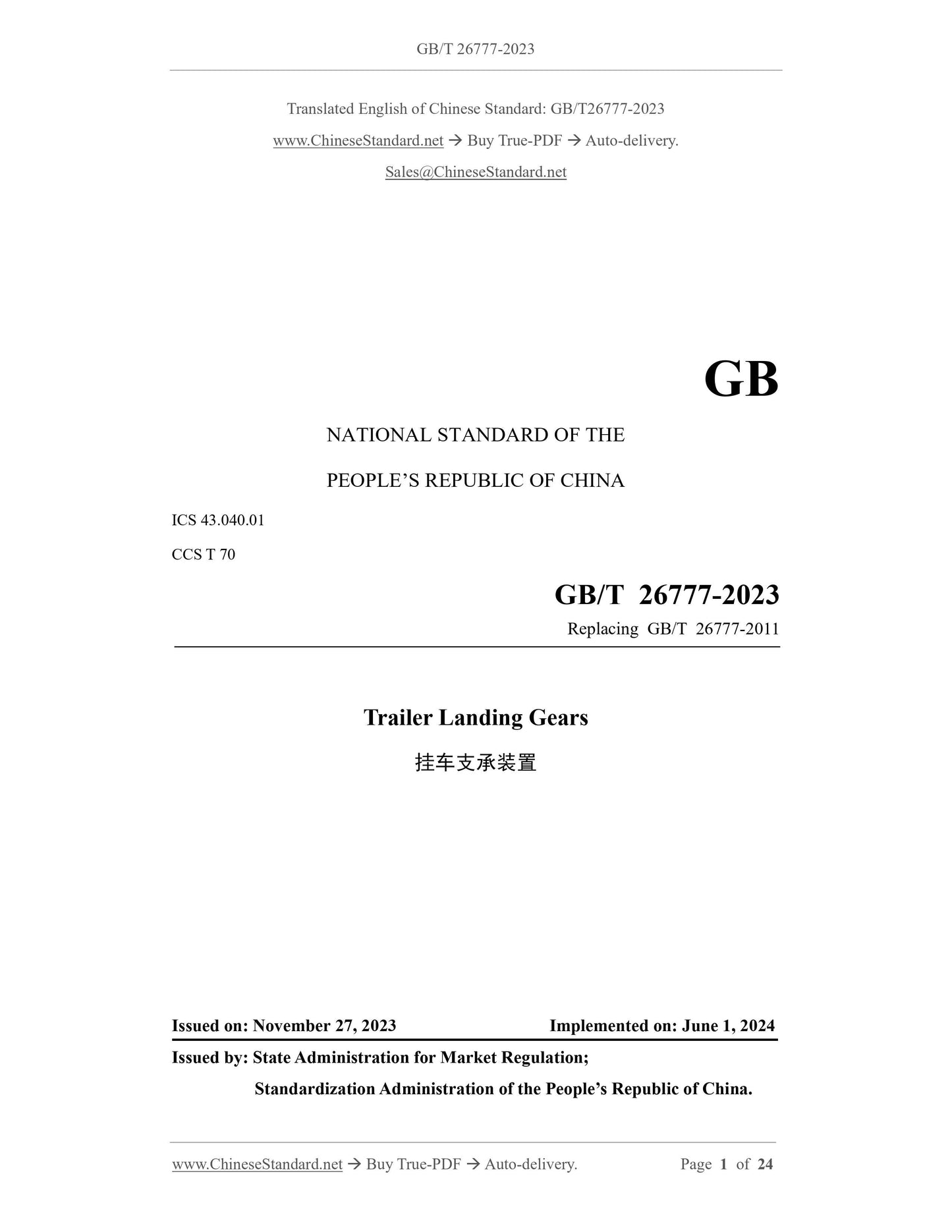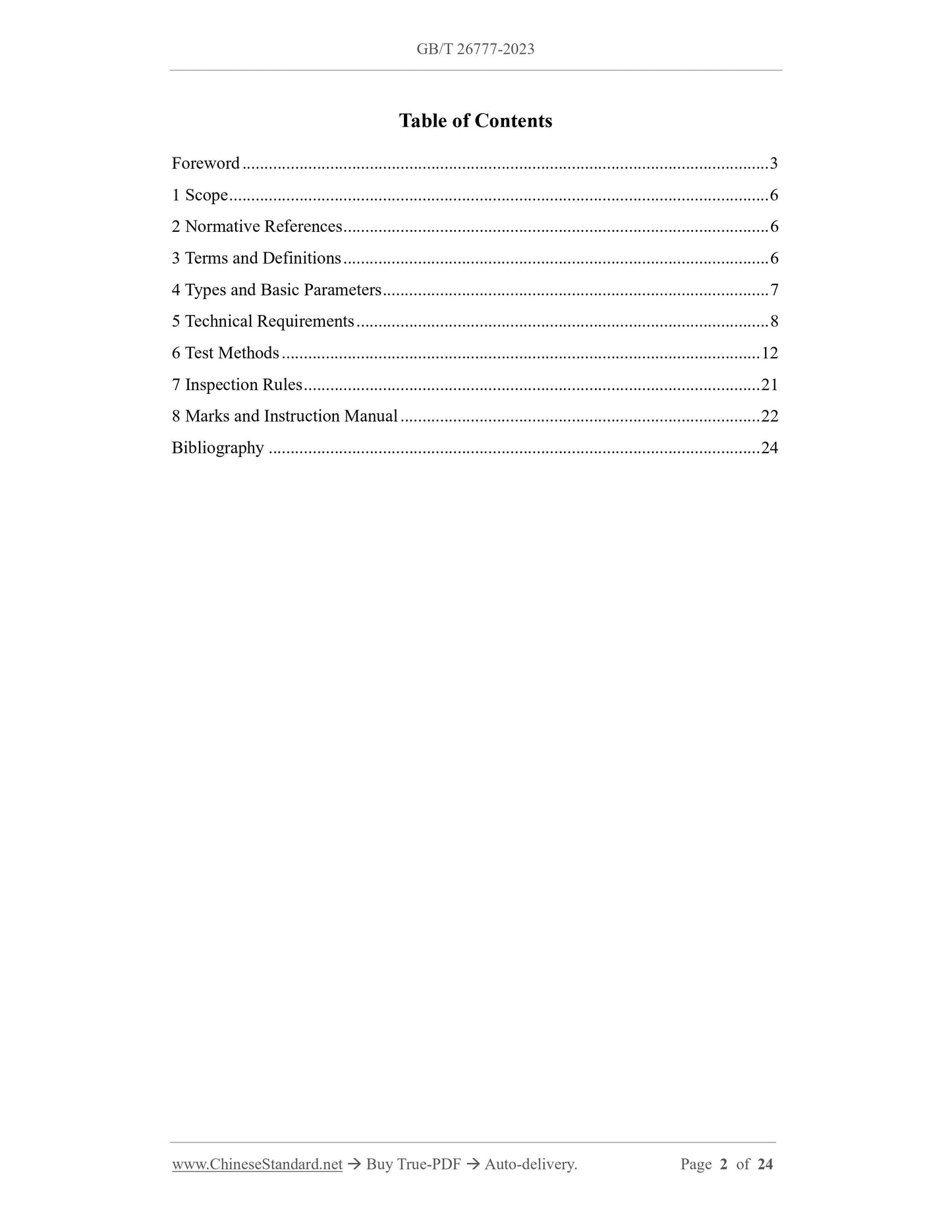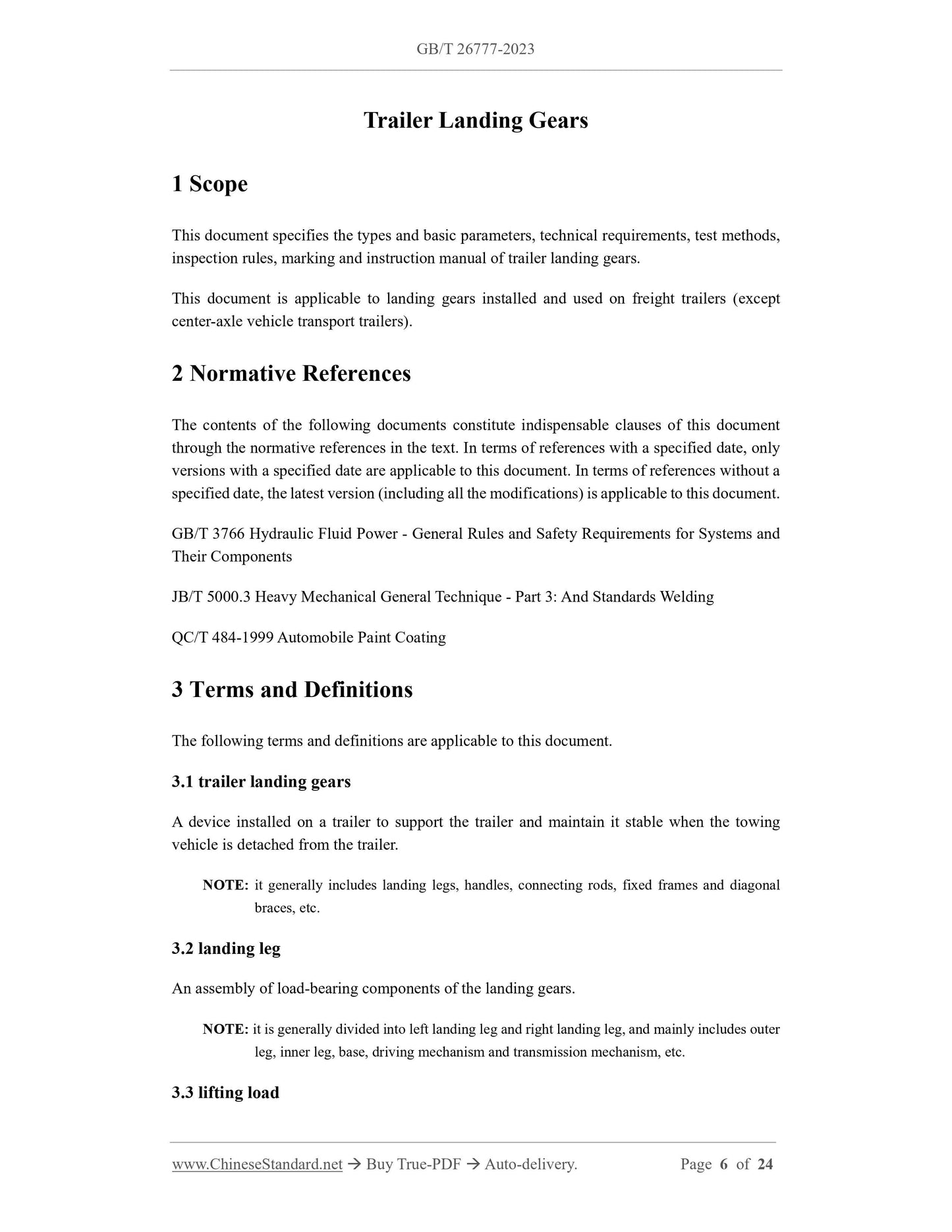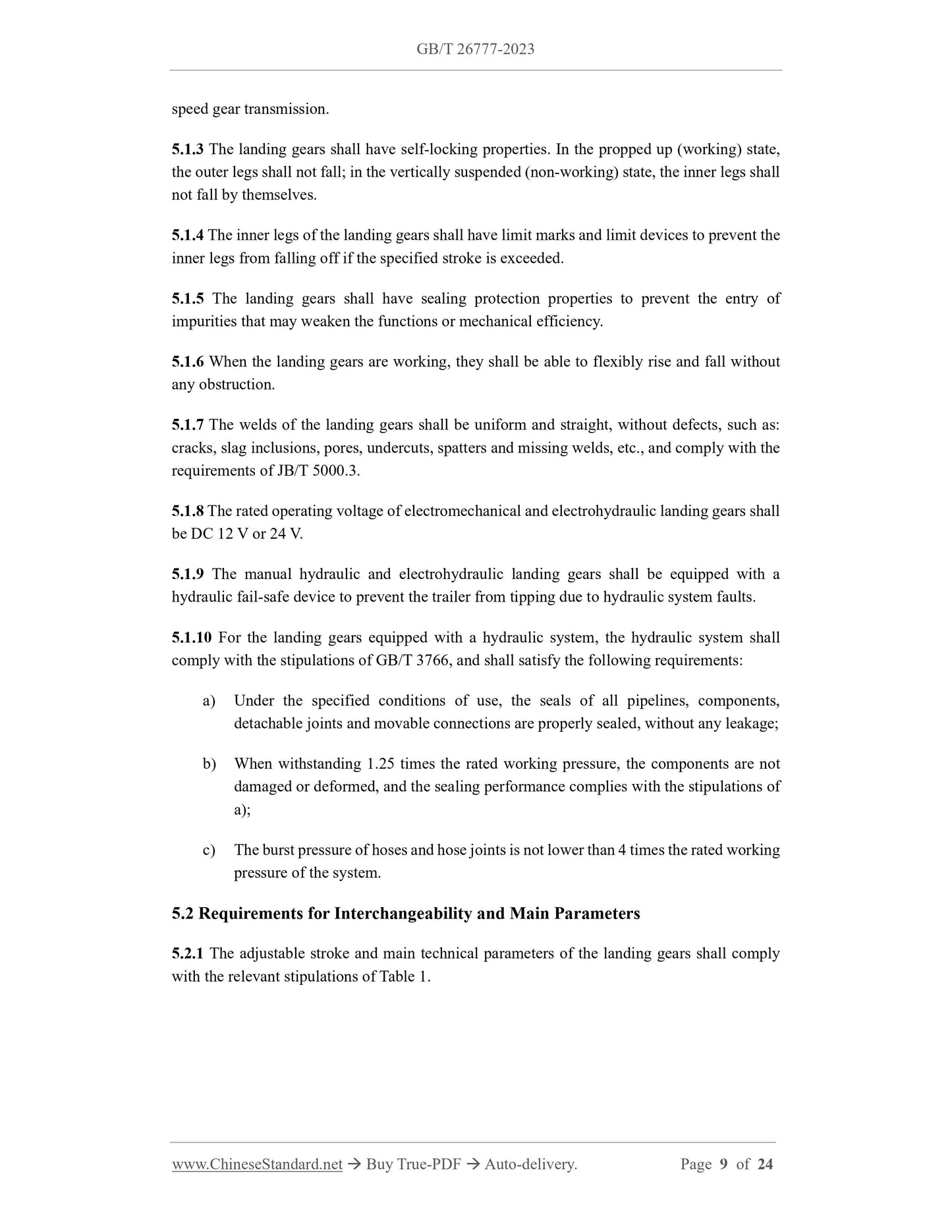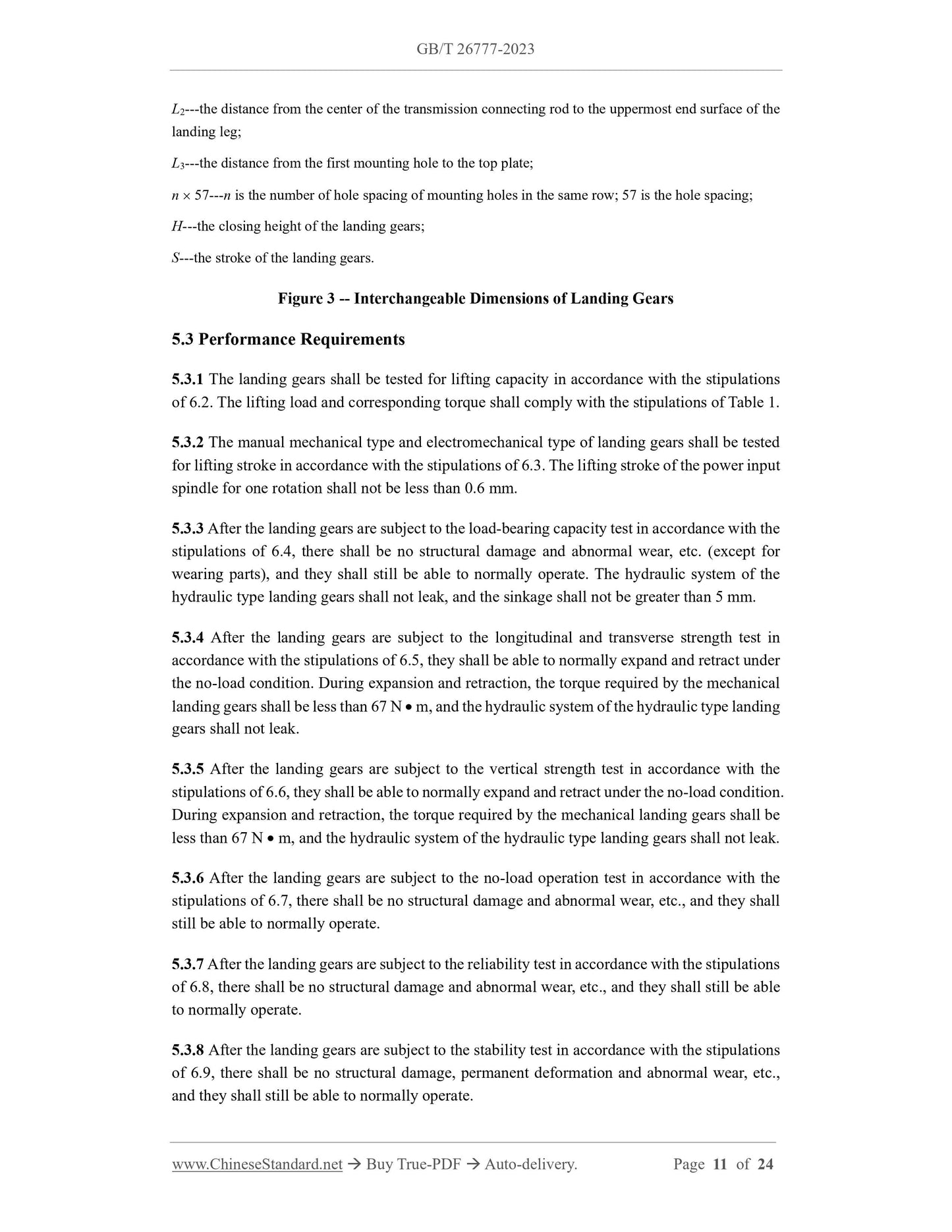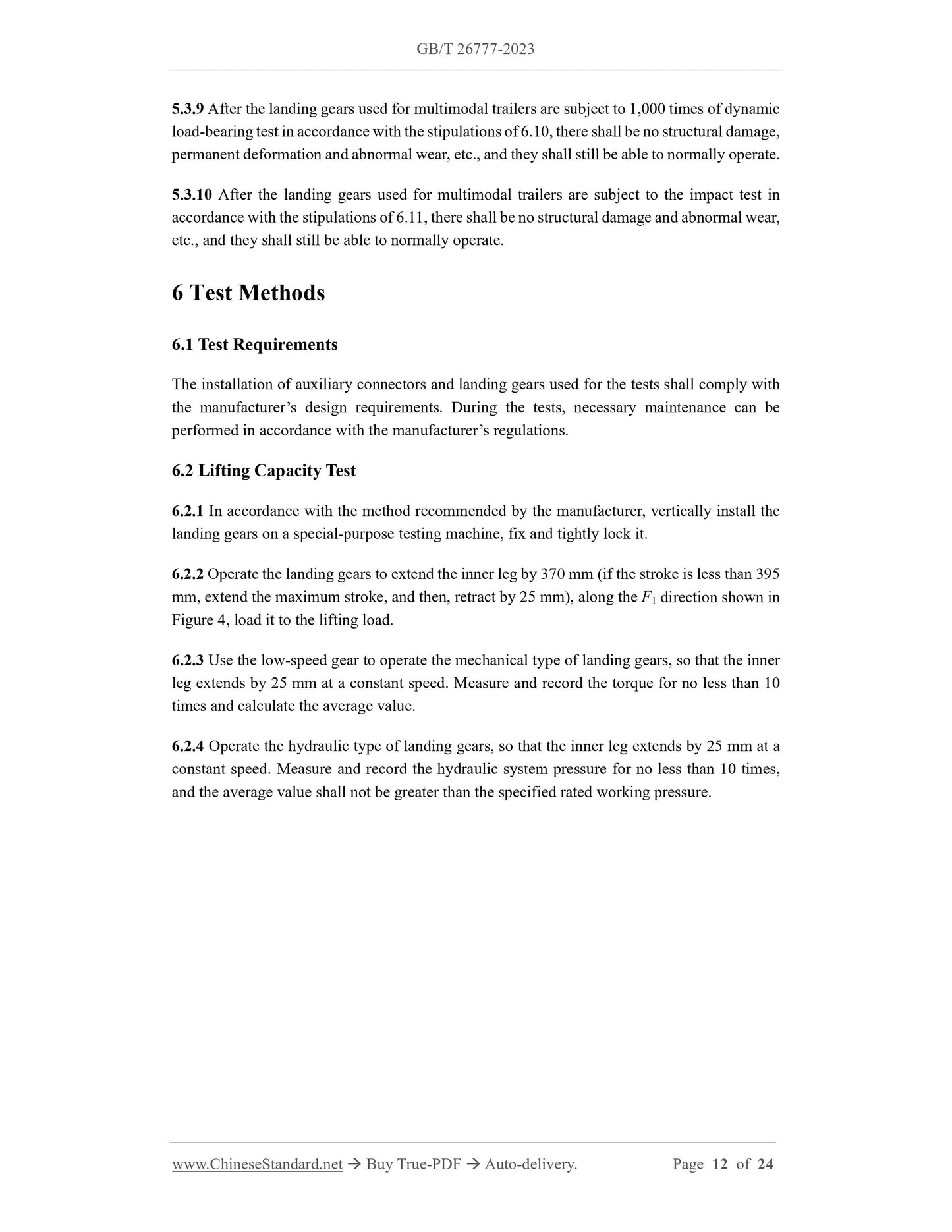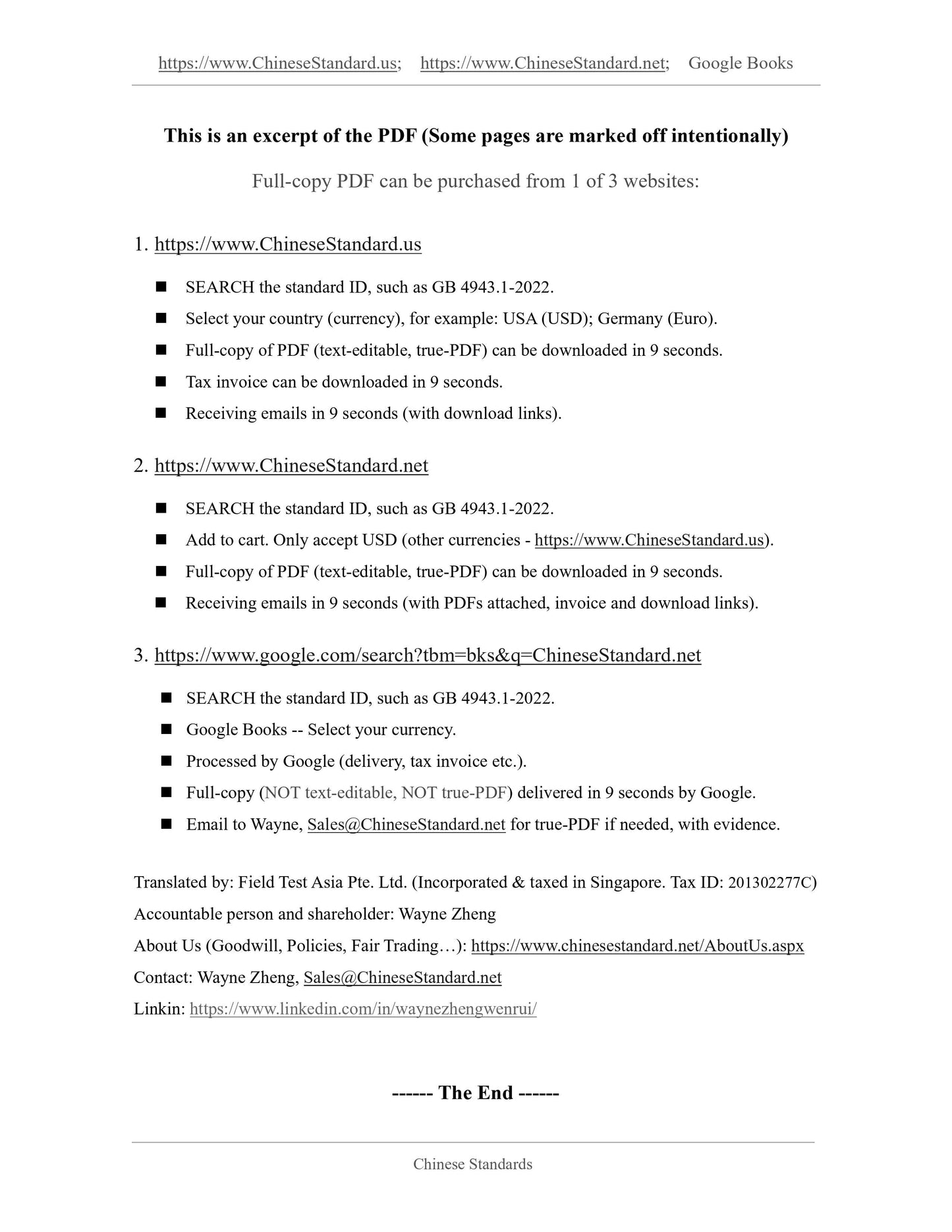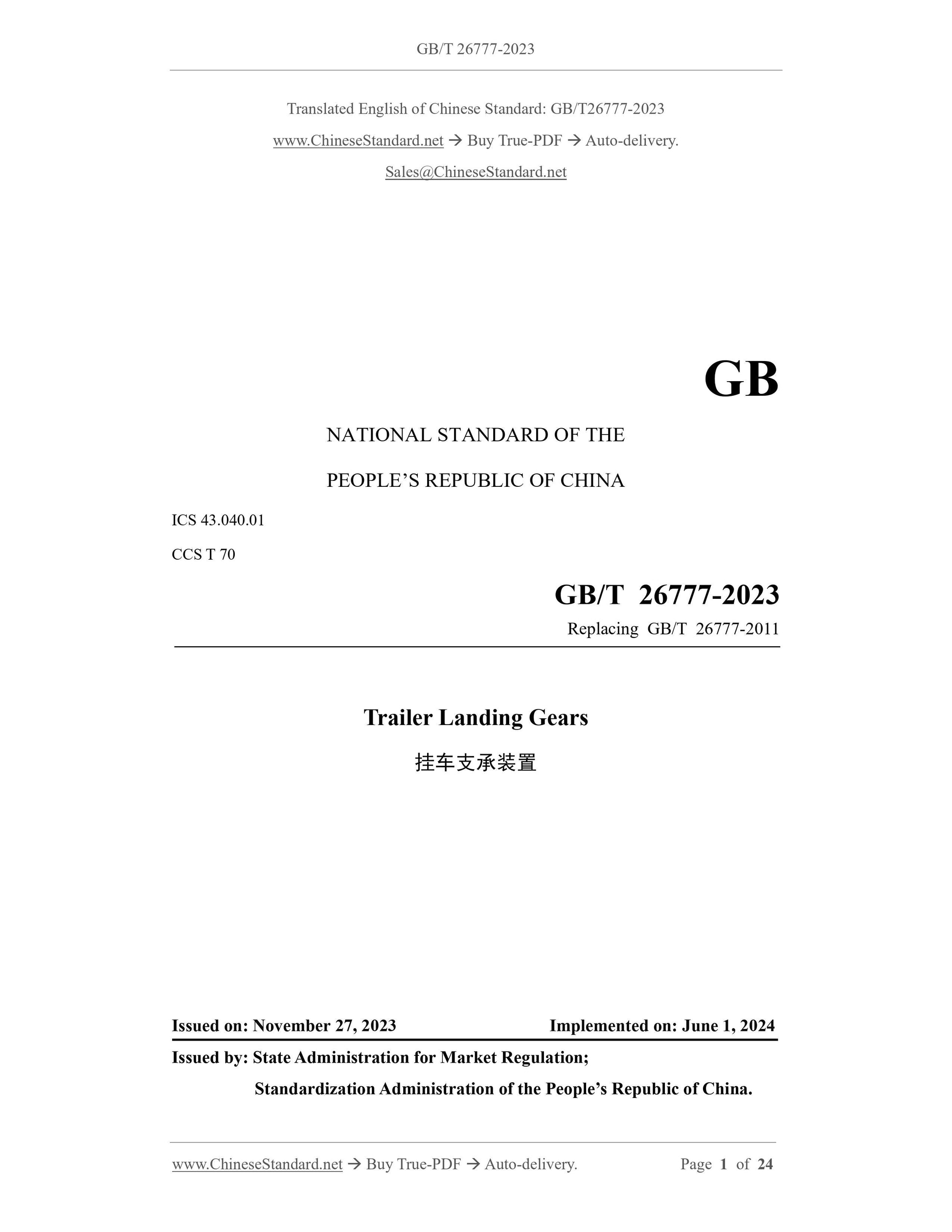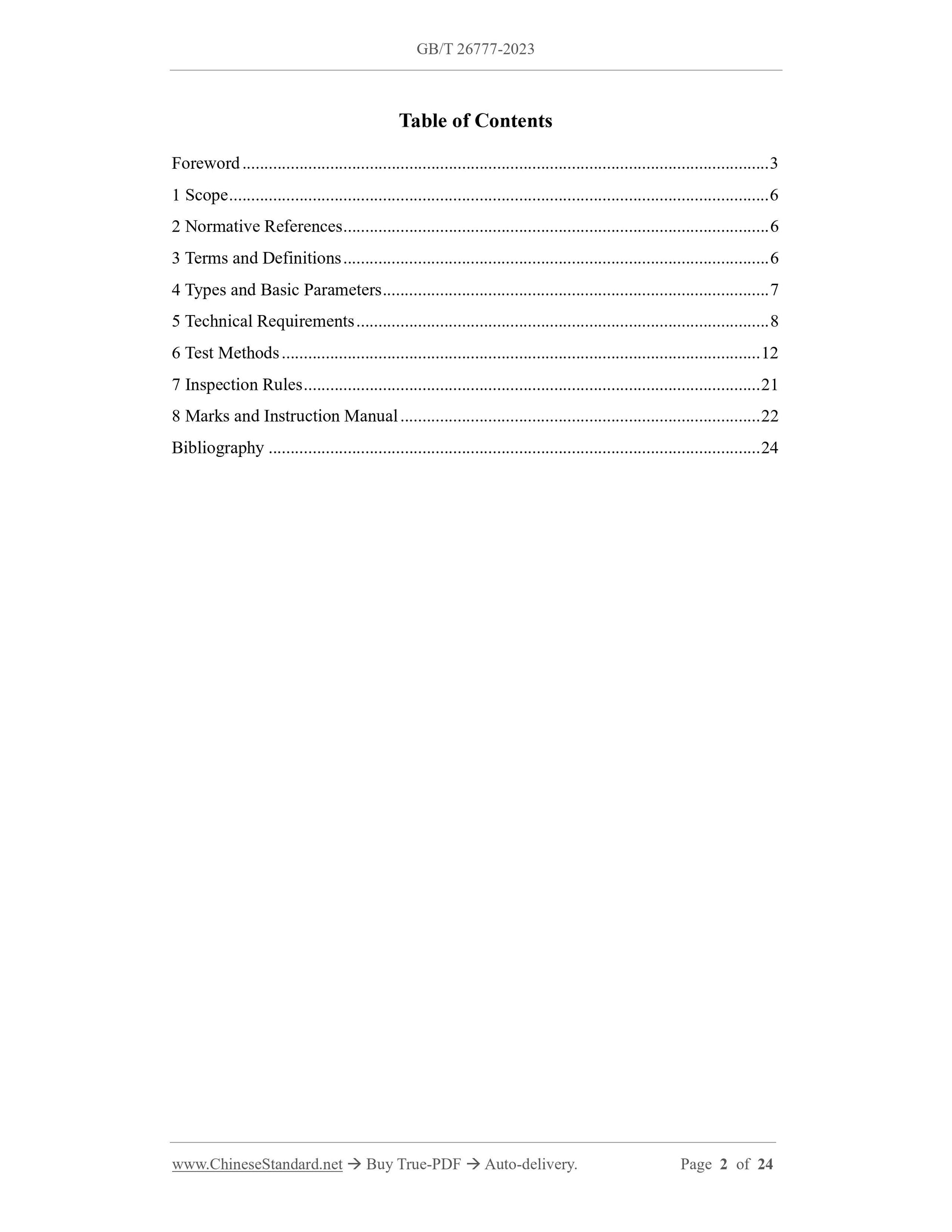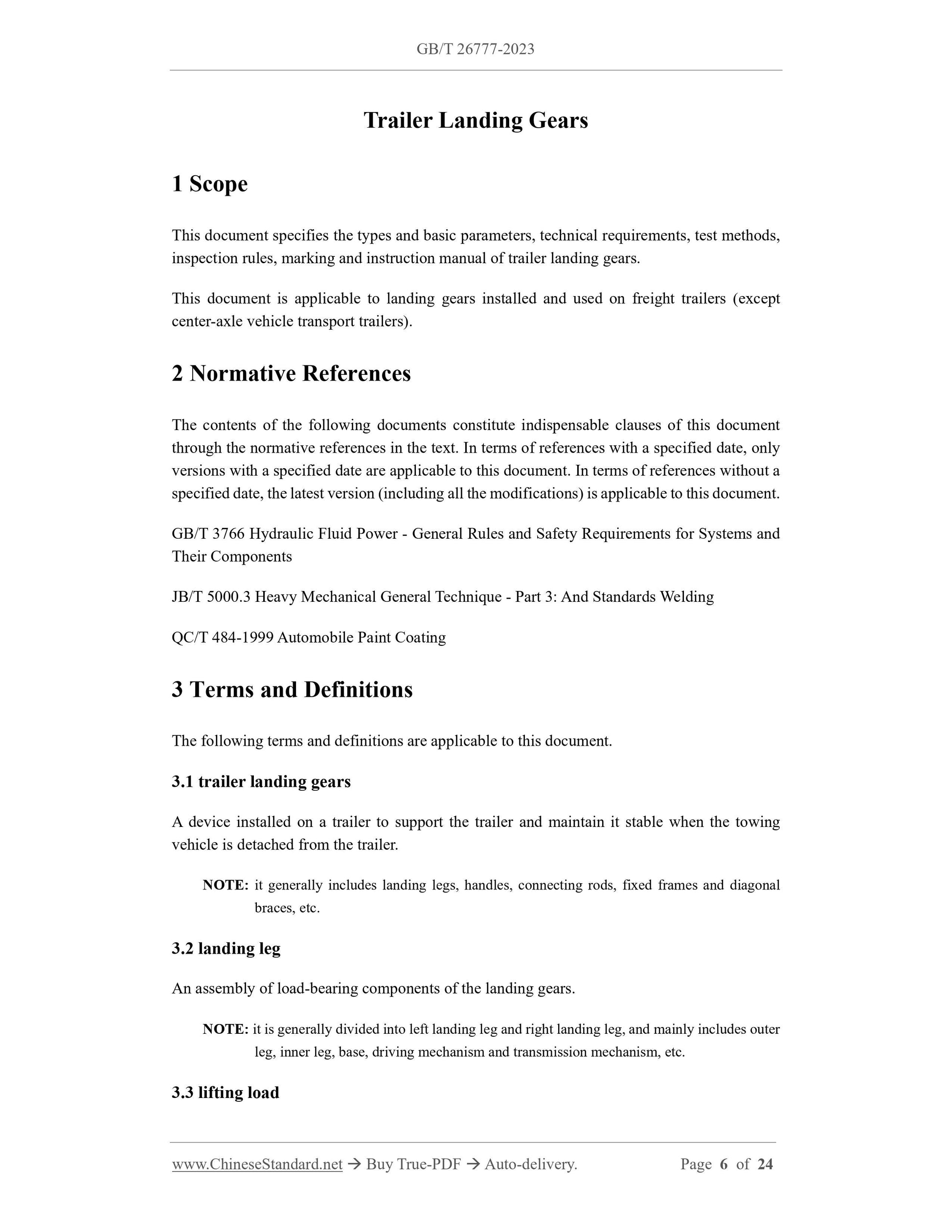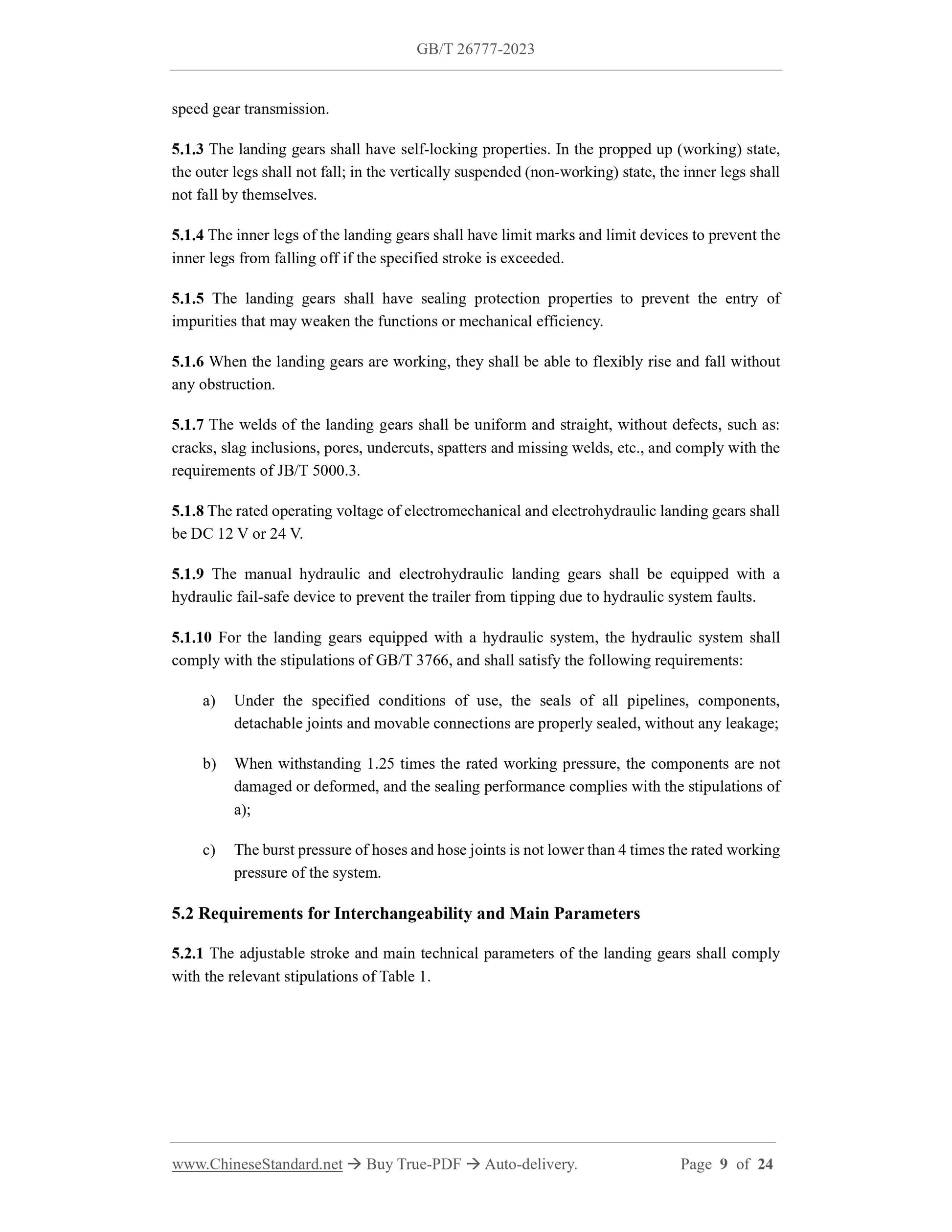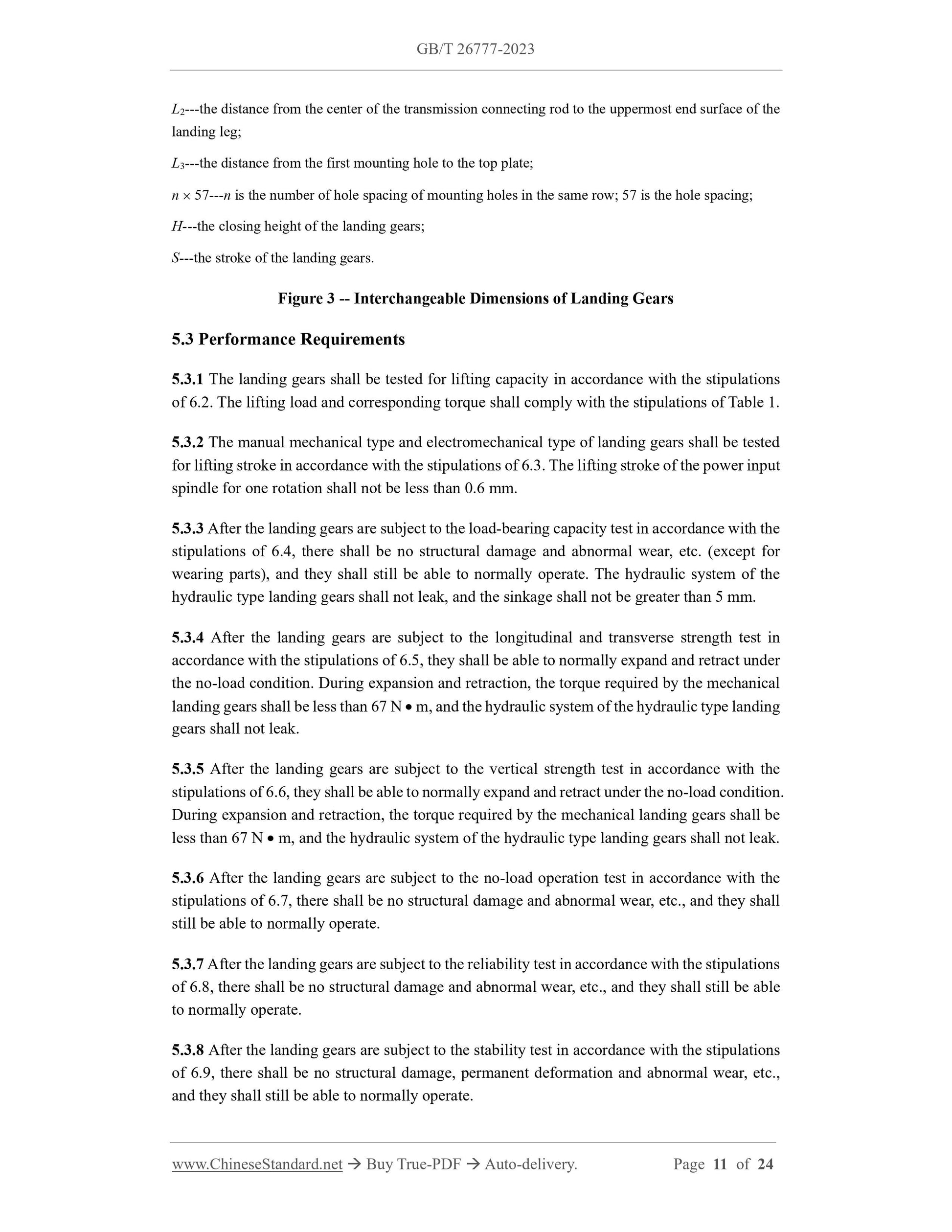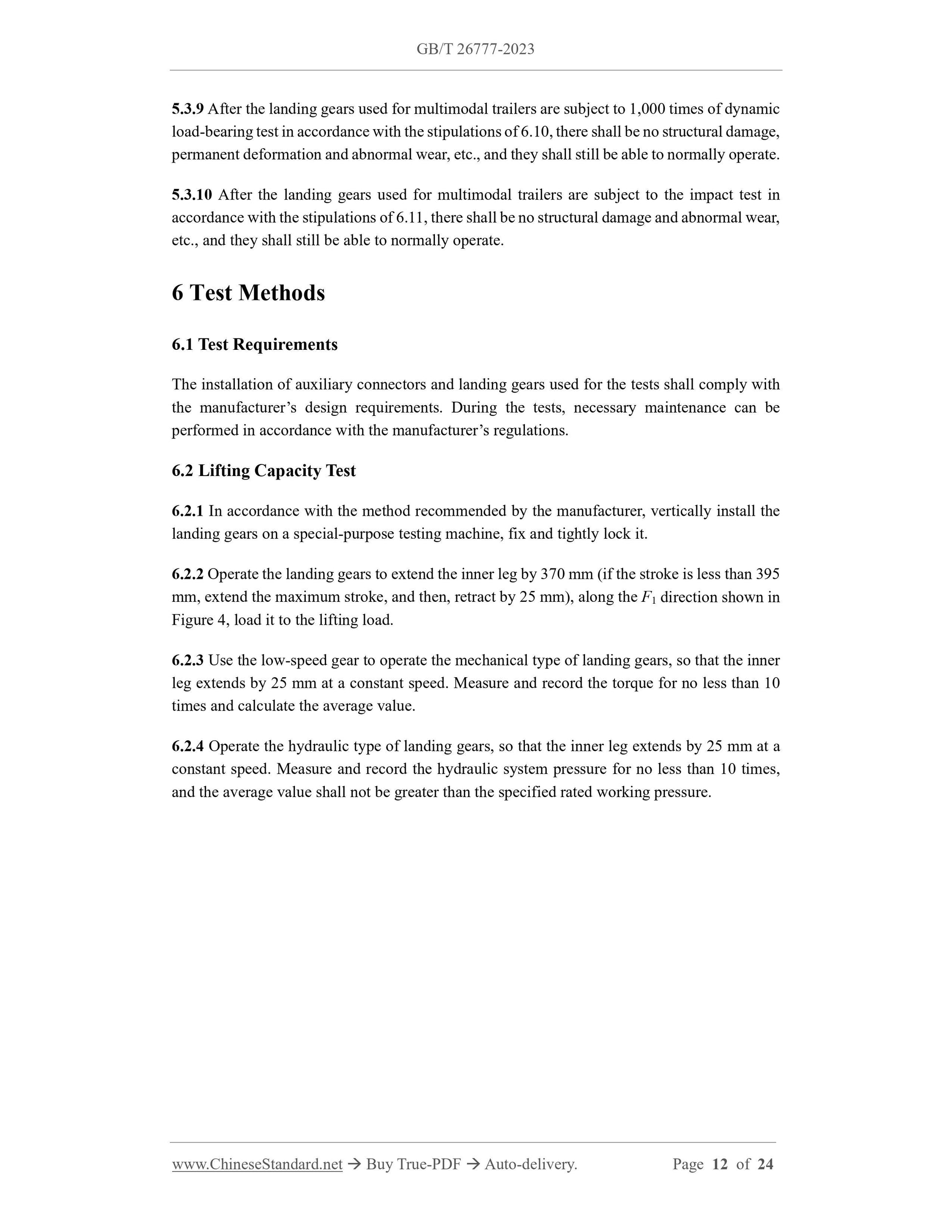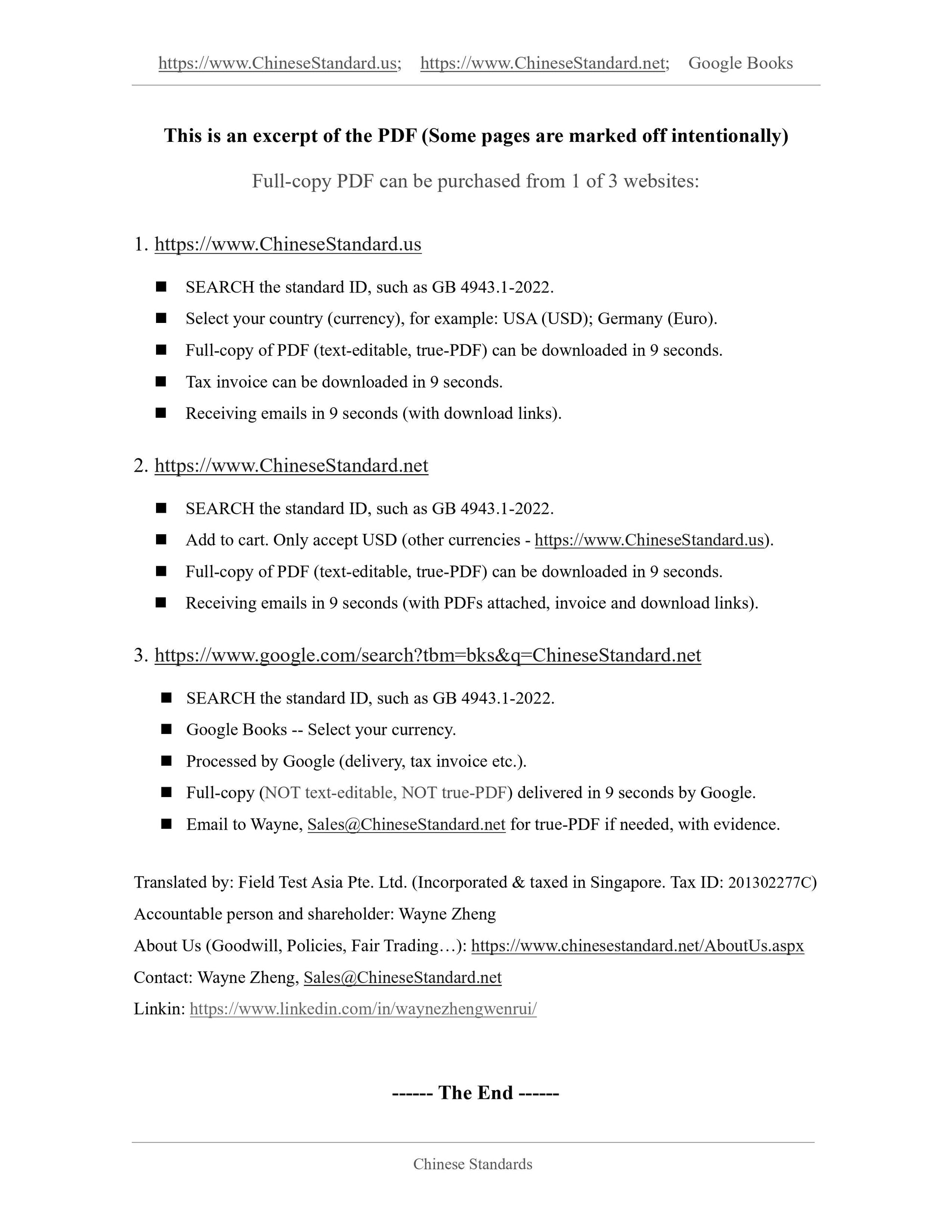1
/
of
7
www.ChineseStandard.us -- Field Test Asia Pte. Ltd.
GB/T 26777-2023 English PDF (GB/T26777-2023)
GB/T 26777-2023 English PDF (GB/T26777-2023)
Regular price
$260.00
Regular price
Sale price
$260.00
Unit price
/
per
Shipping calculated at checkout.
Couldn't load pickup availability
GB/T 26777-2023: Trailer landing gears
Delivery: 9 seconds. Download (and Email) true-PDF + Invoice.Get Quotation: Click GB/T 26777-2023 (Self-service in 1-minute)
Newer / historical versions: GB/T 26777-2023
Preview True-PDF
Scope
This document specifies the types and basic parameters, technical requirements, test methods,inspection rules, marking and instruction manual of trailer landing gears.
This document is applicable to landing gears installed and used on freight trailers (except
center-axle vehicle transport trailers).
Basic Data
| Standard ID | GB/T 26777-2023 (GB/T26777-2023) |
| Description (Translated English) | Trailer landing gears |
| Sector / Industry | National Standard (Recommended) |
| Classification of Chinese Standard | T70 |
| Classification of International Standard | 43.040.01 |
| Word Count Estimation | 19,135 |
| Date of Issue | 2023-11-27 |
| Date of Implementation | 2024-06-01 |
| Older Standard (superseded by this standard) | GB/T 26777-2011 |
| Issuing agency(ies) | State Administration for Market Regulation, China National Standardization Administration |
Share
